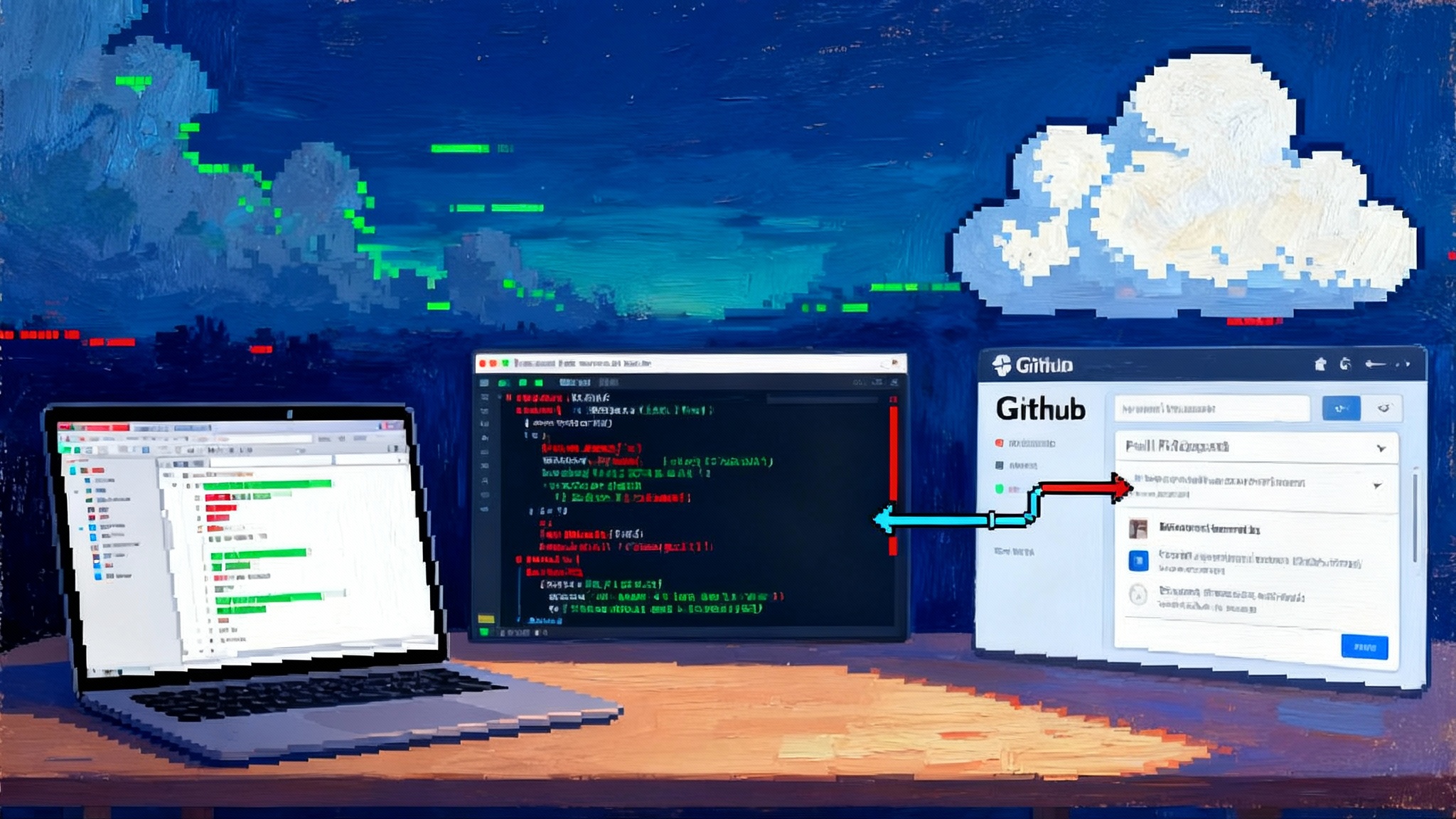Nansen’s AI Trading Chatbot Puts Retail Portfolios on Autopilot
On September 25, 2025, Nansen launched an LLM powered crypto trading chatbot and previewed a path to agent run execution. Here is why vertical, data rich agents can beat general models, and what must be built before retail investors can trust them with real money.

A chatbot that wants to trade for you
On September 25, 2025, Nansen flipped a switch that could reshape how everyday traders interact with crypto markets. The blockchain analytics firm launched an LLM powered trading chatbot that answers portfolio questions, surfaces on chain opportunities, and, if Nansen’s roadmap holds, will graduate from copilot to pilot. The company says agents will ultimately be allowed to execute trades on a user’s behalf, with internal tests already in motion and a price drop intended to bring more traders in at the ground floor. That positioning, along with details about the underlying model and a planned handoff to automated execution, appeared in an Axios exclusive on Nansen’s launch.
The move plants a flag in one of the highest stakes arenas for agentic AI. A chatbot that sends a calendar invite can be cute. A chatbot that can empty your wallet if it misreads a signal is something else entirely. Trading is where the hype around agents collides with the reality of latency, slippage, custody, and regulation.
Why vertical, data rich agents can beat general models
General chatbots are useful, but markets reward specialized edge. Nansen’s pitch is simple. If you train and tune a model on a proprietary corpus of on chain behavior, labeled wallets, and exchange flows, your agent can spot patterns and risks a generic model misses. The dataset is the moat, and the agent is the user interface.
Three ingredients matter here:
- A differentiated corpus. Nansen has spent years labeling large address graphs and tracking smart money behavior. That gives the chatbot a structured memory of who is doing what, where, and with whom, across chains. On its public materials the company highlights coverage across hundreds of millions of labeled addresses, which forms the substrate for conversational answers tied to real entities and transactions. You can see how the product is framed on the Nansen AI mobile page.
- Tool use that actually touches markets. A trading agent is not just a text generator. It needs tools for data retrieval, portfolio inspection, simulation, and execution. The quality of those tools, and the policy that decides when to call them, can matter more than the base model.
- Evaluation against live outcomes. In markets, the scoreboard is PnL and drawdown. A vertical agent must be measured on realized performance and adverse selection, not benchmark trivia. That means tracking how recommendations perform for different user profiles and feeding the outcomes back into the agent’s planning loop.
A domain agent does not need a larger language model than a general chatbot. It needs better priors, more reliable retrieval, and a tighter loop between observation and action. That is how it can rank wallets by risk adjusted performance, contextualize token flow, and translate these findings into orders with sensible sizing and stops.
From advice to autonomy: the trust and compliance stack
Handing execution to an AI is not a single switch. It is a stack of constraints, controls, and records. If Nansen or any player wants retail users to let an agent touch their money, expect to see at least the following:
- Mandates and guardrails. Every agent needs a written investment mandate, just like a human manager. That includes eligible instruments, position limits by asset and sector, maximum gross and net exposure, concentration caps, leverage ceilings, and geographic restrictions. Users should be able to pick from presets, then customize. A good UI would read like a policy document, and the agent should quote back the rule it is relying on before it acts. For how teams operationalize this at scale, see AgentOps for observability and control.
- Risk budgets with hard stops. Daily, weekly, and monthly loss limits, and a kill switch the user can hit. The agent should automatically reduce risk after drawdowns, and it should escalate to human confirmation in stressed conditions.
- Broker and exchange integrations. Real autonomy requires stable connections to centralized exchanges, on chain wallets, and perps venues. Each integration needs robust API key scope, IP whitelists, and withdrawal restrictions. On chain, the safest default is a smart contract or MPC wallet with policy enforcement at the wallet layer, not just in the agent.
- Pre trade checks and post trade surveillance. Before routing an order, the agent must verify position and cash availability, margin impact, price bounds, and liquidity. After execution, it should reconcile all fills, check fees and funding, detect unusual slippage, and adjust risk exposures.
- Versioned strategies and audit trails. Every decision must be reproducible. That means versioning model prompts, tool configurations, datasets, and policy constraints, then tying each order to the exact agent build that made it. Audit logs should capture user prompts, retrieved data, intermediate tool calls, trade plans, orders, fills, and post trade notes. If the agent changes a plan mid flight, the diff should be visible.
- Human in the loop tiers. Early autonomy will likely be opt in and tiered. At first, the agent prepares a trade plan with an explicit checklist, the user taps approve, and only then does the agent route orders. Over time, users graduate to time boxed autonomy that must be renewed, for example the agent can trade within a set risk budget for the next four hours.
- Incident response. When something goes wrong, the user should get a plain language incident report. What the agent attempted, what data it used, where it failed, and what safeguards prevented a worse outcome. This builds trust faster than glossy marketing. For security posture, borrow from agent security best practices.
The execution cliff: slippage, MEV, and the speed premium
Most LLM demos stop at a good narrative. Markets judge you on execution price. For crypto agents, the execution stack is where paper alpha goes to die, and where the best teams earn their edge.
- Liquidity detection. The agent must query depth and spreads across venues, then adapt order type to structure. That could mean TWAP for thin liquidity, sweep orders with price caps for volatile names, or RFQ for larger blocks. On perps, it should account for funding rates and inventory risk.
- Slippage control and post trade TCA. The agent should predict slippage based on recent impact curves, then measure the realized slippage and update its impact model. If slippage exceeds a threshold, it should pause and reassess.
- MEV and sandwich defense. On chain swaps face adversarial order flow. The agent should prefer protected routes, set max slippage, and avoid predictable patterns that expose users to sandwich attacks.
- Latency budgets. Dialog is slow, markets are fast. The agent needs an execution microservice that works independently from its conversational brain. The LLM decides why and what, the execution engine decides how and when, with subsecond feedback on fills and quotes.
- Custody aware routing. Do not move funds unless necessary. Favor venues and pools where funds already sit, within the mandate’s risk rules. Every transfer is an attack surface and a fee.
Failure modes and how to harden an LLM trader
Hallucinations are not just embarrassing in markets, they are expensive. Add market microstructure, adversarial information environments, and flaky APIs, and you get a long tail of failure modes:
- Hallucinated signals. The model invents a metric or misreads a wallet label. Countermeasure: require provenance for claims, force the agent to cite which dataset and timestamp it used, and block execution without verifiable sources.
- Prompt injection and data poisoning. Public feeds can trick an agent to run the wrong tool or fetch the wrong contract. Countermeasure: strict tool whitelists, sanitization layers for untrusted content, and sandboxed calls that do not have trading privileges.
- Overfitting to recent winners. The agent chases the hottest wallet cohort or the last seven days of flow. Countermeasure: mandate time diversification, rotate signals, and cap exposure to any single source of alpha.
- Execution drift. A good plan dies on contact with the order book. Countermeasure: limit how far the execution engine can deviate from the plan, and force a human check if drift exceeds a threshold.
- Silent degradation. An API changes, latency spikes, or a venue throttles. Countermeasure: continuous canary tests, health scoring for integrations, and automatic failover with explicit user notice.
- Hidden correlations in stress. Assets that looked independent move together in a crash. Countermeasure: stress tests with regime switches, and conservative correlation assumptions in sizing.
The theme is determinism where it matters. Use the LLM to translate messy questions into structured plans, but constrain final actions to parameterized, testable procedures.
The regulatory gaze is coming
The first version of any trading agent is advisory. As soon as it touches execution or makes individualized recommendations, it enters regulated territory, with jurisdiction depending on the instrument and venue. Expect several lines of scrutiny:
- Investment adviser and broker obligations. If the agent provides personalized advice on securities, adviser rules can apply. If it routes orders or receives compensation tied to execution, broker style obligations and best execution standards may be implicated. Even in crypto, many tokens can be treated as securities in some jurisdictions.
- Derivatives oversight. Perpetual futures and options are squarely in the derivatives bucket, which brings futures commission and swap dealer style obligations into view for any entity that intermediates or automates access.
- Marketing and disclosures. Promising outperformance invites claims risk. Clear disclosures about model limitations, dataset coverage, and conflicts of interest are mandatory. If there are referral fees or revenue shares from venues, those must be disclosed and, in some regions, explicitly consented to by the user.
- KYC, AML, and sanctions compliance. If the agent moves funds or instructs withdrawals, customer identity, source of funds, and screening obligations follow. Execution policies should block known illicit addresses and risky counterparties.
- Recordkeeping. Regulators will expect complete communication and trade records. The audit stack described above is not just a good idea, it is survival.
Even where regulations are still forming for agents, the safest assumption is that the law will look through the interface. If a human had to comply when doing the same thing, your agent does too.
The business model shift as prices fall
The Axios report noted a price cut timed to launch, dropping the entry subscription from 99 dollars to 69 dollars. This is significant. In consumer fintech, price compression usually signals a pivot from early adopters to mainstream users. In agents, it also changes the unit economics.
Lower subscription prices imply two things. First, scale is the new moat. The more users the agent sees, the better it can tune prompts, detect edge cases, and harden its execution stack. Second, revenue diversification becomes imperative. Expect to see a mix of:
- Premium tiers that unlock higher frequency limits, more integrations, and larger risk budgets.
- Basis point fees for agent managed mandates, capped to comply with retail protections.
- Referral or revenue shares from venues, with explicit disclosure and opt outs. For context on adjacent models, see how payments agents went mainstream.
- Data upgrades for developers who want to build their own tools on top of the agent’s corpus.
Critically, the cost line is changing too. Model inference keeps getting cheaper, and targeted retrieval reduces token use. The heavy spend will be in integrations, risk controls, and support. That spend is a feature, not a bug, because it is part of the trust moat.
How Nansen’s approach differs from generic chatbots and payments agents
Generic chatbots answer questions, then stop. Payments agents move money, but only within narrow flows like bill pay or checkout. Trading agents must plan, predict, and take adversarial markets into account.
- Knowledge. A general model does not know which wallets consistently front run catalysts, or which LPs exit when volatility spikes. A vertical agent can, because it has labeled the graph and watches it continuously.
- Objectives. A payments agent has a single clear goal, pay a specific amount to a counterparty. A trading agent optimizes across multiple objectives, including expected return, risk, costs, and constraints. That requires a planner and a risk manager, not just a dispatcher.
- Feedback. Payments are binary. Trades have a distribution of outcomes and a shadow of opportunity cost. The agent must evaluate decision quality, not just whether the transfer cleared.
- Adversaries. Very few people try to sandwich your rent payment. Many will try to sandwich your swap. That changes everything about routing and timing.
This is why trading is a proving ground. If agents can handle sloppy data, adversarial venues, and strict compliance, they can handle most consumer tasks.
What to watch next
Nansen’s launch tells us a direction of travel. The next year will reveal whether agents can earn trust with real money. Here is a pragmatic checklist for anyone watching or building:
- Show provenance inside the chat. When the agent gives a recommendation, it should expose the wallet labels, timestamps, and market snapshots that support it.
- Separate brains from hands. Keep a conversational brain that plans and explains, and an execution engine that is deterministic and auditable.
- Instrument everything. Users should be able to replay a trade and see every tool call and check.
- Start with bounded autonomy. Let users delegate small, reversible tasks first, and renew autonomy explicitly. Make the agent ask for permission to widen its scope.
- Treat the UI like a policy editor. Every toggle corresponds to a rule the agent must quote back during review.
- Embrace external audits. Invite security and market microstructure experts to test the agent and publish findings.
- Be candid about failure. Ship incident write ups. In markets, honesty compounds faster than hype.
If this stack comes together, the simple question, what should I do with my portfolio today, might finally have an answer that is fast, personalized, and safe enough to act on. Nansen is betting that a purpose built agent, armed with deep on chain context and real execution plumbing, can deliver that answer to millions. We are about to find out whether retail investors are ready to hand over the keys, and whether the agent can keep the car on the road when the weather turns.








